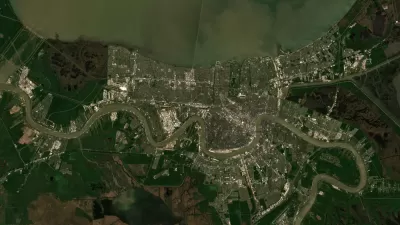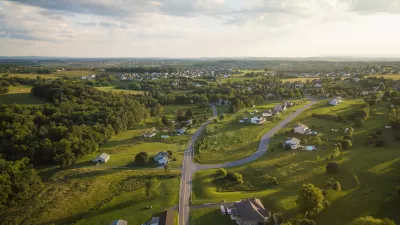A recent spate of articles has pondered the concepts and planning strategies at work in the region of the country described as the Rust Belt.

Scott Suttell begins this survey by analyzing whether the term "Rust Belt" is pejorative, outdated and unfairly describing the industrial Midwest "with an unflattering label that misleads the rest of the country about what’s happening here."
Suttell considers two opposing viewpoints on the use of the word, before deciding not to use the term in his own writing, and asking for ideas for a replacement.
An article by Alexia Fernandez Campbell goes further than considering the demise of the term "Rust Belt," instead suggesting that part of the region commonly referred to as the Rust Belt needs to embrace decline. In effect: that parts of the Rust belt "need to die off." That article presents an interview with Galen Newman, an assistant professor of landscape architecture and urban planning at Texas A&M, who, along with Justin Hollander of Tufts University, are leading researchers in the concepts of "smart decline." Contrast smart decline with the more common talking point of smart growth, and it's easy to understand why some communities aren't rushing to embrace decline.
Jason Segedy, blogger at Notes from the Underground, has written in response to that interview, admitting a visceral response to the ideas of smart decline before presenting a rational case. The article is long and in-depth, addressing a series of questions about the future of Rust Belt cities in thorough detail.
FULL STORY: Do Parts of the Rust Belt Need to Die Off?

Alabama: Trump Terminates Settlements for Black Communities Harmed By Raw Sewage
Trump deemed the landmark civil rights agreement “illegal DEI and environmental justice policy.”

Planetizen Federal Action Tracker
A weekly monitor of how Trump’s orders and actions are impacting planners and planning in America.

The 120 Year Old Tiny Home Villages That Sheltered San Francisco’s Earthquake Refugees
More than a century ago, San Francisco mobilized to house thousands of residents displaced by the 1906 earthquake. Could their strategy offer a model for the present?

In Both Crashes and Crime, Public Transportation is Far Safer than Driving
Contrary to popular assumptions, public transportation has far lower crash and crime rates than automobile travel. For safer communities, improve and encourage transit travel.

Report: Zoning Reforms Should Complement Nashville’s Ambitious Transit Plan
Without reform, restrictive zoning codes will limit the impact of the city’s planned transit expansion and could exclude some of the residents who depend on transit the most.

Judge Orders Release of Frozen IRA, IIJA Funding
The decision is a victory for environmental groups who charged that freezing funds for critical infrastructure and disaster response programs caused “real and irreparable harm” to communities.
Urban Design for Planners 1: Software Tools
This six-course series explores essential urban design concepts using open source software and equips planners with the tools they need to participate fully in the urban design process.
Planning for Universal Design
Learn the tools for implementing Universal Design in planning regulations.
Clanton & Associates, Inc.
Jessamine County Fiscal Court
Institute for Housing and Urban Development Studies (IHS)
City of Grandview
Harvard GSD Executive Education
Toledo-Lucas County Plan Commissions
Salt Lake City
NYU Wagner Graduate School of Public Service





























